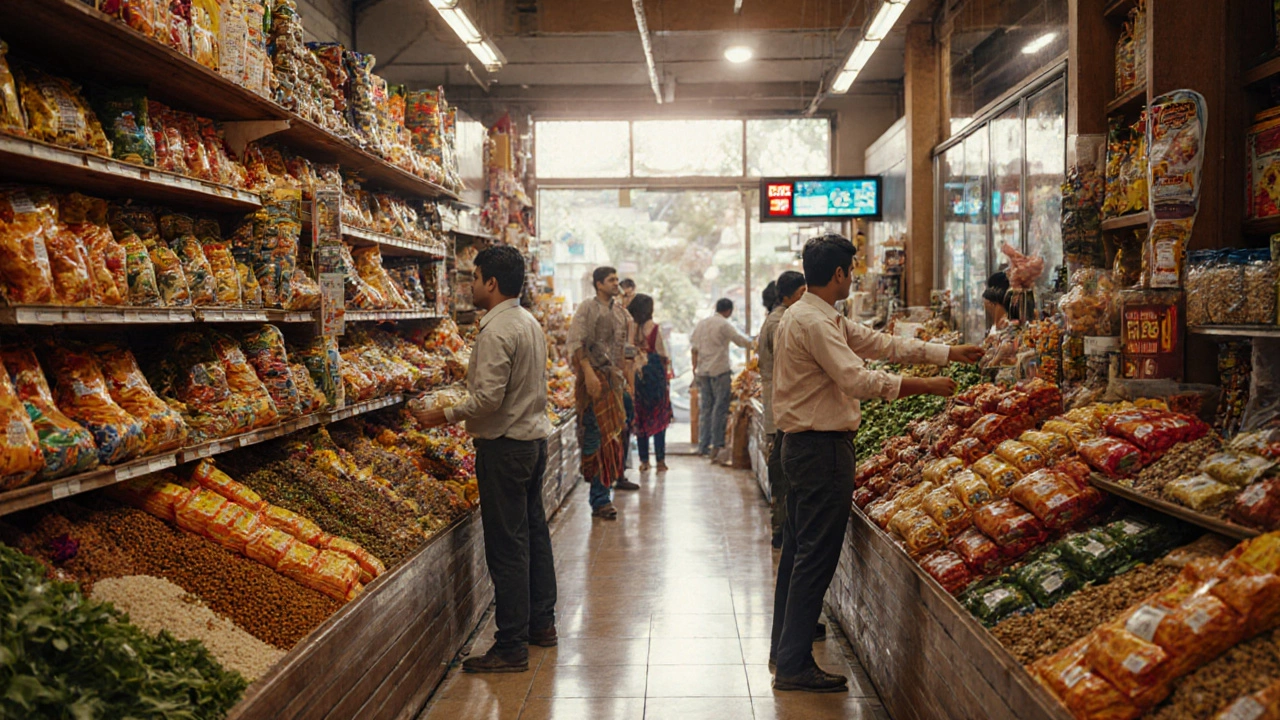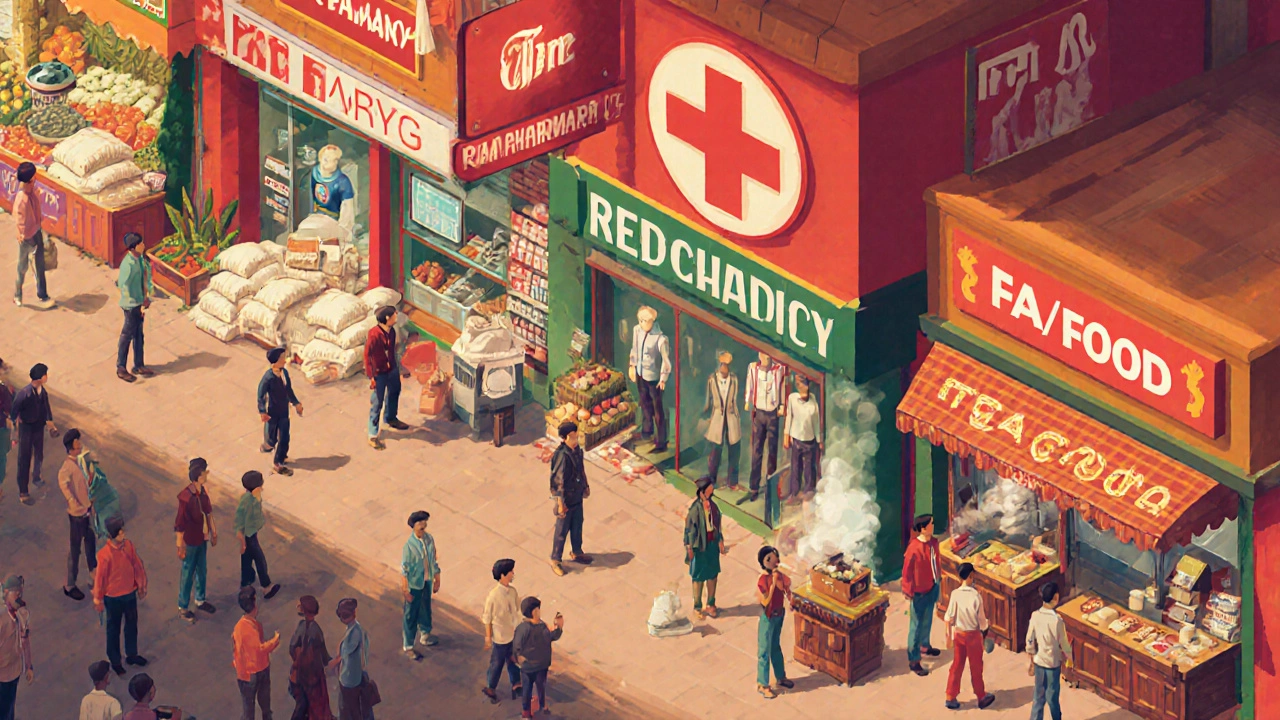Shop Business Profitability Calculator
Select Your Shop Type
Profitability Analysis
Key Takeaways
- Grocery and pharmacy shops consistently deliver 12‑20% net margins, even in Tier‑2/3 cities.
- Specialty apparel boutiques can hit 18‑25% margins but need strong brand positioning.
- Electronics stores have higher turnover but lower margins (5‑10%) due to price wars.
- Tea/coffee and fast‑food outlets profit 15‑22% when they focus on high‑traffic locations.
- Franchise models (e.g., Domino’s, BigBazaar) often shorten the break‑even period to 12‑18months by leveraging brand pull.
If you’re scanning the Indian market for the most profitable shop business in India, the answer isn’t a one‑size‑fits‑all. Profitability hinges on three variables: product margin, footfall potential, and operating cost structure. Below we break down the top retail shop types, show real‑world numbers, and give a checklist to match a model with your budget and ambitions.
Understanding Profitability in Indian Retail
Profitability in a shop business is usually measured by net profit margin - net profit divided by total revenue. A healthy margin for a small‑scale shop sits around 12‑20% after accounting for rent, staff, utilities, and taxes. In India, additional cost factors include GST (typically 5‑18% depending on the product) and compliance with the MSME Act for small enterprises.
When we talk about a shop’s earnings, two more concepts matter:
- Turnover speed: how fast inventory converts to cash. Grocery stores turn stock every 2‑4 weeks, while electronics move once a month.
- Break‑even period: the time needed to recover the initial capital investment.

Top Shop Categories in India
Below are the most common shop formats found across Indian towns and metros. Each description uses Schema.org micro‑data for the first mention, enabling search engines to map the entities accurately.
Grocery store is a retail outlet that sells daily‑use food items, beverages, and household essentials. Typical net margins range from 12% to 20% because of high footfall and rapid inventory turnover.
Pharmacy is a licensed shop that dispenses medicines, health supplements, and basic medical equipment. Margins sit between 15% and 22% thanks to regulated price caps and repeat customers.
Clothing boutique is a specialty apparel shop focusing on curated fashion lines, often targeting middle‑class urban buyers. Net margins can climb to 25% when brand exclusivity commands premium pricing.
Electronics store is a retail point that sells gadgets, appliances, and accessories. Margins are tighter - usually 5% to 10% - because of high product cost and fierce discounting.
Tea/coffee shop is a small eatery serving hot beverages, snacks, and light meals. With efficient space usage, margins sit at 15%‑22% in high‑traffic areas.
Fast‑food outlet is a quick‑service restaurant offering standardized meals (e.g., burgers, rolls). Profit margins are 16%‑23% when location and brand consistency are strong.
Franchise shop is a business that operates under an established brand’s name, following its proven systems. Margins vary widely, but many franchises report 18%‑24% after the first year.
Profitability Metrics & Benchmarks
To decide which shop type fits your profit goal, compare the following benchmark table. Numbers are averages taken from industry reports (2023‑2024) and field surveys of 250 small‑scale retailers.
| Shop Type | Average Net Margin | Typical Initial Investment (₹) | Break‑Even Period | Key Success Factor |
|---|---|---|---|---|
| Grocery store | 12‑20% | 5L‑15L | 12‑24months | Location density & supply chain |
| Pharmacy | 15‑22% | 7L‑20L | 10‑18months | Licensing & trust |
| Clothing boutique | 18‑25% | 4L‑12L | 14‑30months | Brand curation |
| Electronics store | 5‑10% | 10L‑30L | 18‑36months | After‑sales service |
| Tea/coffee shop | 15‑22% | 3L‑8L | 10‑20months | Ambience & speed |
| Fast‑food outlet | 16‑23% | 6L‑15L | 12‑24months | Standardized menu |
| Franchise shop | 18‑24% | 8L‑25L (varies by brand) | 9‑18months | Brand recognition |
Choosing the Right Shop for You
Use the following checklist to align a shop type with your personal situation:
- Budget ceiling: How much capital can you invest without borrowing?
- Location access: Do you own a shop space or need to rent? High‑footfall spots cost more.
- Regulatory comfort: Are you ready to handle pharmacy licensing or GST compliance?
- Product knowledge: Do you understand fashion trends, food safety, or electronic specs?
- Risk tolerance: High‑margin boutique may need strong branding; lower‑margin electronics rely on volume.
Match each shop type against the checklist. For example, a first‑time entrepreneur with ₹8L capital, a small kiosk in a residential area, and no specialized licensing can realistically start a tea/coffee shop or a basic grocery outlet.

Step‑by‑Step to Launch a High‑Profit Shop
- Research local demand: Use Google Trends, local market surveys, and competitor footfall counts.
- Finalize shop format: Pick the type that clears the checklist above.
- Secure location: Negotiate rent, verify footfall, and ensure compliance with local zoning.
- Obtain licenses:
- Grocery - Shop‑establishment certificate, FSSAI if you sell packaged food.
- Pharmacy - Pharmacy registration with the State Pharmacy Council.
- Food‑service - FSSAI licence, health department clearance.
- Register for GST: Required for turnover >₹40L (₹20L for NE states). Choose the correct HSN codes.
- Set up supply chain: Identify wholesalers, negotiate credit terms, and install inventory software.
- Hire and train staff: Emphasize customer service, product knowledge, and hygiene.
- Launch marketing: Leverage local flyers, WhatsApp groups, and Google My Business.
- Offer a grand‑opening discount of 10‑15% to drive footfall.
- Track KPIs: Daily sales, inventory turnover days, gross profit %, and cash‑flow.
- Adjust pricing or stock mix if margin falls below the benchmark.
Common Pitfalls & How to Avoid Them
Even a high‑margin shop can slip into loss if you overlook these traps:
- Over‑stocking perishable goods: Leads to waste and erodes margins. Use FIFO and demand forecasting.
- Ignoring GST compliance: Penalties can eat 5‑10% of profit.
- Choosing the wrong location: High rent can nullify a 20% margin. Aim for 7‑10% of projected revenue as rent.
- Undervaluing staff training: Poor service pushes customers to competitors, especially in pharmacies and boutique stores.
- Skipping market testing: Launching without a soft opening can expose you to unexpected demand spikes.
Address each point early; a simple spreadsheet to track expiry dates or a monthly GST reconciliation habit can save thousands.
Frequently Asked Questions
Which shop type gives the fastest break‑even in a Tier‑2 city?
Franchise fast‑food outlets and pharmacies usually hit break‑even within 12‑18months because of strong brand pull and repeat purchases.
Do I need a separate GST registration for each shop I open?
One GSTIN can cover multiple shops under the same business entity, provided the aggregate turnover stays below the applicable limit.
Is a pharmacy more profitable than a grocery store?
Pharmacies often enjoy higher margins (15‑22%) compared to grocery stores (12‑20%). However, licensing costs and inventory hold can offset that advantage if not managed well.
Can I run a tea/coffee shop from a home‑based kiosk?
Yes, as long as you obtain the local health permission and register for GST. Many micro‑entrepreneurs start with a 3‑ft stall in a market and scale up.
What is the minimum capital needed to start a franchise shop?
Entry‑level franchise fees in India range from ₹5L to ₹15L, plus an estimated working capital of another 3‑5L for the first three months.
Armed with these numbers, you can now compare shop types side‑by‑side, pick the one that matches your cash flow and risk appetite, and kick‑start a business that truly maximizes profit.

